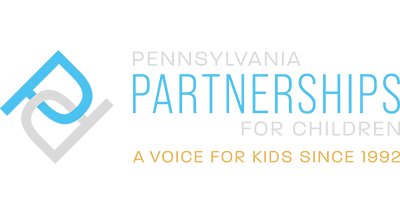What the Final 2024-25 State Budget Means for PA Kids and Families
The state spending plan for 2024-25 totals $47.6 billion, a 6% increase over the enacted 2023-24 budget. There are pros and cons within the final budget for Pennsylvania children and families. Despite substantial increases for K-12 education and Career and Technical Education (CTE), there are minimal increases for child care and pre-kindergarten, and flat funding for home visiting.
Investments for Children and Families in the 2024-25 Pennsylvania Budget
Early Care and Education
Pre-k
Pre-k programs are receiving a total increase of $17.7 million: $15 million for Pre-K Counts and $2.7 million for the Head Start Supplemental Assistance Program (HSSAP). The increase for Pre-K Counts will bring full-time students’ rates to $10,500 (up from $10,000) and part-time students to $5,250 (up from $5,000). While increased rates will help support the early care and education workforce and ease inflationary costs for providers, the overall investment falls short of the $30 million supported by the Pre-K for PA campaign. For HSSAP, to achieve more parity in rate increases to Pre-K Counts, the campaign sought a $8.8 million increase. On a positive note, harmful language was prevented from being placed in the school code bill that would have penalized providers struggling to fill slots due to workforce shortages.
Child Care
An increase of $26 million is included in the Child Care Services line and the Child Care Administration line is level funded. Most of the increase in this year’s budget will maintain the child care subsidy exit income increase to 300% of the Federal Poverty Income Guidelines or 85% of the State Median Income. The remaining funds will be used by OCDEL to increase the child care subsidy reimbursement rate to the federally recommended 75th percentile of the cost of child care services. While this increase will help buffer inflationary pressures on child care providers, it will not address the workforce crisis in the sector. The Start Strong PA child care campaign worked hard advocating for a dedicated recruitment and retention program supported by recurring funds and is disappointed in the lack of investment in the workforce behind the workforce.
Perinatal and Child Health
Medicaid and CHIP
The final budget includes a $4.1 million increase for CHIP, a 3.7% bump from last year. Last spring, DHS began the monumental task of completing redeterminations for all Medicaid recipients after the end of the Public Health Emergency. The increase in CHIP funding seeks to accomplish the department’s ongoing redetermination efforts. The proposed Medical Assistance capitation line item includes a relatively small increase of $12.7 million to fund Pennsylvania’s Medicaid program. This lower-than-average increase for Medicaid capitation is due to the previously mentioned redetermination process undertaken by DHS, which removed thousands of Pennsylvanians from the state’s Medicaid rolls.
Early Intervention
An increase of $9.1 million is included for the Early Intervention Part C (infants and toddlers) program in the DHS budget. The PDE budget’s Early Intervention Part B (age three to five) program includes an increase of $32.9 million to improve well-being, health, and educational outcomes. PPC advocates for support of the Early Intervention Part C program as part of the Thriving PA campaign. Thriving PA is hopeful there will be further dialogue to address the need for additional support for Early Intervention in future budgets, particularly as we await the results of a comprehensive rate methodology study being conducted by OCDEL.
Home Visiting
The final budget follows the governor’s budget proposal in flat funding evidence-based home visiting lines, including the Community-Based Family Center line and the Nurse-Family Partnership line. PPC has raised awareness of a need to replace one-time federal funds used for home visiting services in 2022 that must be completely backfilled by July 1, 2026. Federal home visiting funding will also be impacted by sequestration beginning in Federal Fiscal Year 2024 and will need to be replaced by recurring state funds. The lack of increased, recurring state investments prompts concern over potential future cuts in services for families currently enrolled in a home visiting program. There is still a significant unmet need for services, with only 7% of eligible pregnant women, young children, and families currently receiving them. PPC acknowledges that increasing access must happen in a way that home visiting programs can be effectively implemented.
Child Welfare
The child welfare budget line contains a $2 million increase in state investments. This increase is significantly lower than increases in years past and can be attributed to multiple factors, including absorbing the cost of the response for COVID-19 and underspending due to staffing shortages.
K-12
Basic and Special Education
A total increase of just under $1 billion is included for K-12 education: $526 million to address the adequacy gap via the Ready to Learn Block Grant and $225 million to be distributed through the Basic Education Funding Formula. The adequacy investment will serve as a large influx of funds to the most underfunded schools, replacing the Level-Up initiative that targeted funds to the state’s 100 poorest school districts in recent budgets. There is also an increase of $100 million for Special Education and $50 million for the School Safety and Security Fund (which will also address mental health).
Career and Technical Education
In contrast to the minuscule increase for CTE in the governor’s proposed budget, the final bill contains a total increase of $30 million. Of this, $12.7 million will flow through the CTE subsidy line, $5 million will pass through the CTE equipment grant line, and $12 million will be utilized by the PA Smart program.
School Food Services
The final budget contains an increase of $6.3 million to continue the current free school breakfast and expanded free school lunch programs. This is less than the governor’s proposed $16.6 million increase for school food services. PPC is reviewing the discrepancy between the governor’s proposed increase and the amount appropriated in the final budget.

